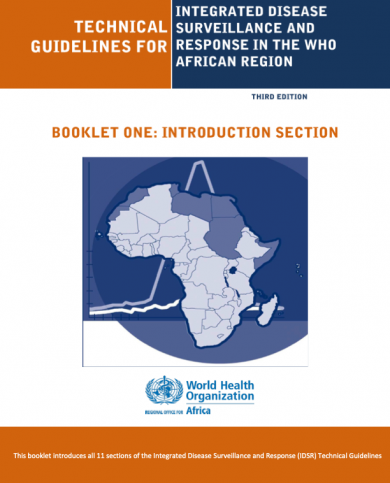
Technical Guidelines for Integrated Disease Surveillance and Response in the African Region: Third edition
In 1998, the World Health Organization (WHO) Regional Office for Africa (AFRO), together with its technical partners, adopted a strategy for developing and implementing comprehensive public health surveillance and response systems in African countries, initially called Integrated Disease Surveillance. However, to highlight the linkage between surveillance and response, the strategy was later renamed Integrated Disease Surveillance and Response (IDSR). The first edition of the IDSR technical guidelines (2002) was widely adopted by Member States. Although progress towards a coordinated, integrated surveillance system has been mixed, almost every country in the Region and their partners invested human and material resources in the process, in an effort to build capacities for public health surveillance systems for early detection, confirmation and response to public health threats, to prevent unnecessary illness, death and disability. The coming into force in 2007, of the International Health Regulations (IHR 2005), the emergence of new diseases, conditions and events and the formulation of strategies for disaster risk management (DRM) resulted in the need to revise the first edition of the IDSR guidelines. There was also a need to address the increasing burden of non-communicable diseases. Also, community-based surveillance for early detection, rapid confirmation and response to public health threats had to be enhanced, while alignment with broader system strengthening objectives was necessary. This led to the development of the second edition of the IDSR guidelines in 2010.


